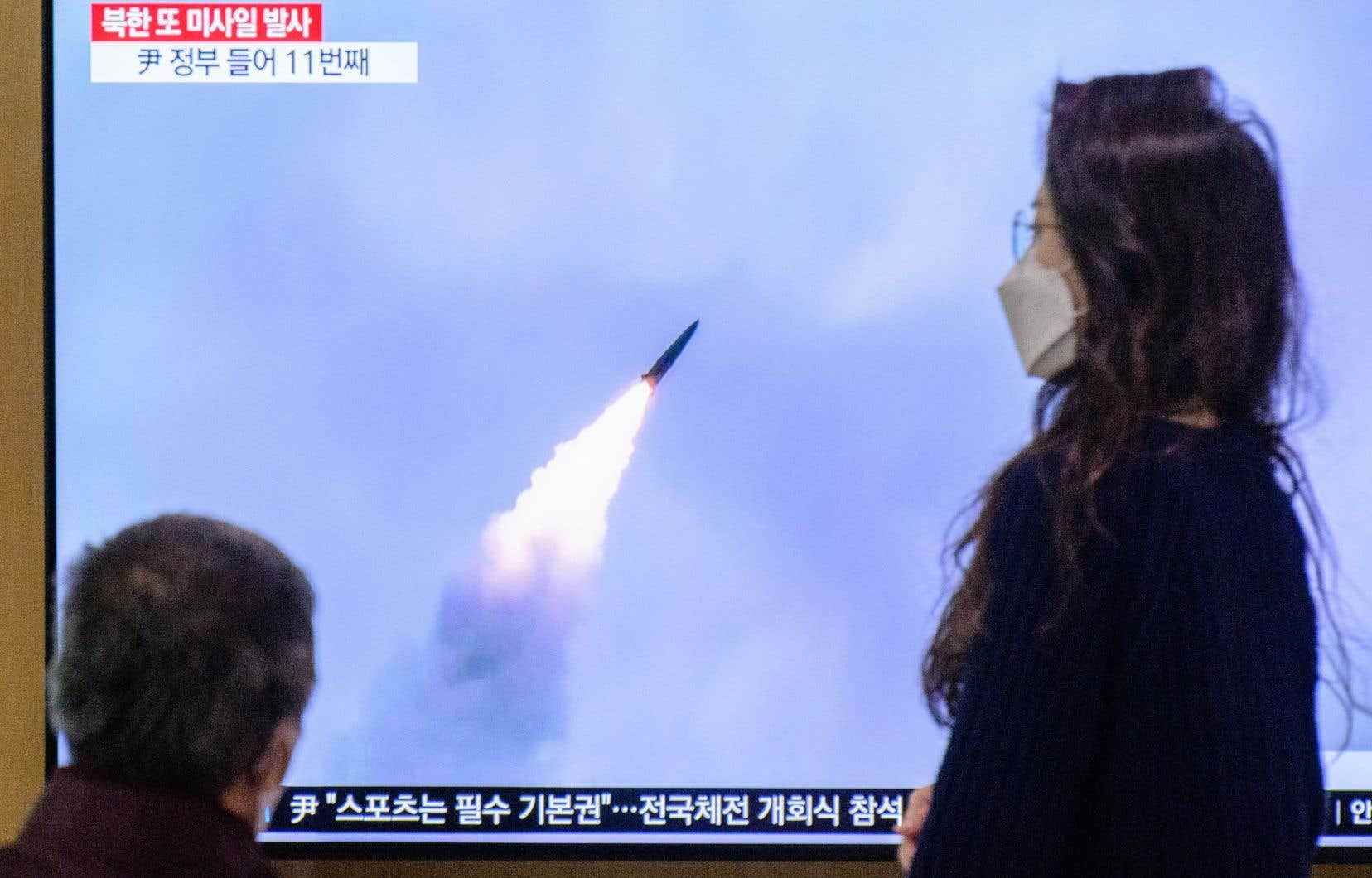North Korea said on Monday it had simulated “tactical nuclear” strikes over the past two weeks, personally overseen by leader Kim Jong-un, in response to the “military threat” it said posed by the United States and its allies.
The Pyongyang regime has launched seven ballistic missiles over the past two weeks. One of these projectiles flew over Japan for the first time since 2017. And the international community expects North Korea to carry out a nuclear test soon, which would also be a first in five years.
Faced with this growing threat, the United States, South Korea and Japan have intensified their military cooperation. The three countries have conducted extensive naval and air exercises around the Korean peninsula in recent weeks, including the deployment of the US nuclear-powered aircraft carrier USS Ronald Reagan.
But these maneuvers are perceived by North Korea as the dress rehearsal for an invasion of its territory.
In response, “Korean People’s Army (KPA) units responsible for the use of tactical nuclear weapons held military exercises from September 25 to October 9 to test and evaluate the deterrence and nuclear attack on the country,” the official KCNA news agency said on Monday.
These test launches of ballistic missiles were “the simulation of a real war”, she added.
Also according to KCNA, the exercises included a “simulation of the loading of tactical nuclear warheads” on board a missile which was then launched from a silo located under an artificial lake in the northwest of the country on 25 september.
“Neutralization of airports”
Other tests carried out in the following days consisted, among other things, of simulating the “neutralization of airports” in South Korea, the “strike of the main command centers” and “the main ports of the enemies”, according to KCNA.
As for the projectile that flew over Japan on October 4, it was a “new type of intermediate-range surface-to-surface ballistic missile”, the agency said.
This missile traveled 4,500 km before falling in the Pacific, which experts estimate to be the longest distance covered so far by a North Korean projectile during a test.
KCNA justified these exercises by the joint American-South Korean military maneuvers, “regrettable attitude which further aggravates tension in the region while openly constituting a military threat” for North Korea, according to her.
Kim Jong-un “directed the military exercises on the spot,” said the agency, which published numerous photos of the leader and the missile launches on Monday.
While North Korea disarmament talks have long been deadlocked, Pyongyang, under numerous UN Security Council sanctions, has stepped up its weapons tests since the start of the year. .
Many experts and officials also believe that North Korea has completed preparations for a new nuclear test, which would be the seventh in its history and the first since 2017.
During a giant military parade at the end of April in Pyongyang, Kim Jong-un had promised to develop the country’s nuclear forces “at the greatest possible speed”.
Missile nuclearization
And in late September, the North Korean regime adopted a new doctrine claiming that the country’s nuclear power status was “irreversible”.
“They’re looking for a tactical nuclear weapon, that’s for sure,” said US security analyst Ankit Panda, who “suspects that they’re going to gradually nuclearize a lot of their new short-range missiles.” scope “.
The fact that North Korea described its seven recent missile launches as being linked to “tactical nuclear operations units” is significant, the analyst added. “It’s interesting because it includes everything from short-range ballistic missiles to IRBMs,” he tweeted.
North Korea also claimed to have carried out “a large-scale combined air attack simulation” involving “more than 150 aircraft”, and also supervised by Kim Jong-un.
On Thursday, South Korea said it took off 30 of its fighter jets after detecting 12 North Korean aircraft flying in formation and conducting firing exercises near the inter-Korean border.
“Kim probably wants to tell the United States and South Korea that any show of solidarity and alliance readiness will be wasted,” Rand Corporation analyst Soo Kim told AFP.
According to this expert, “we probably won’t see North Korea back down anytime soon, and there is every reason to believe that the allies will not bend easily this time either”.
